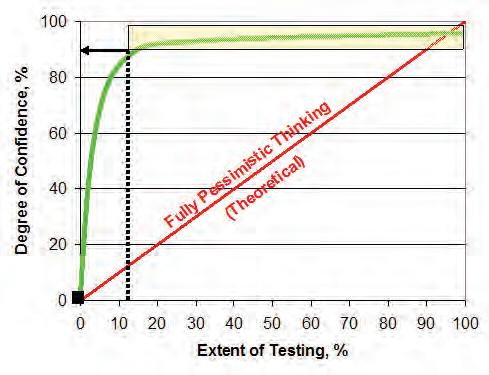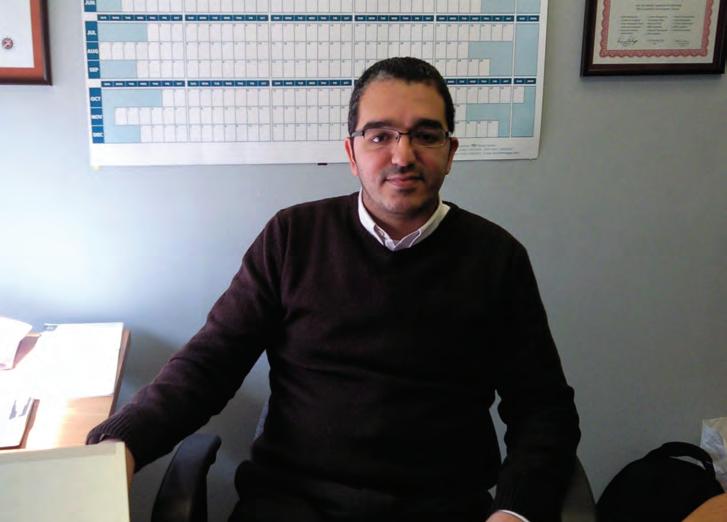
6 minute read
LEADERSHIP STYLES
Success?! What is success? Am I successful? What does it take to be successful and do I have it? The interpretati on of such a big word varies from one person to another but at the end of the day one can only agree that success is all about reaching goals and fulfi lling potenti als, it’s a long rough road with many obstacles in the way, but with moti vati on and inspirati on these obstacles can be demeaned nevertheless overcome leading the way to a world full of endless possibiliti es. Other people successes might just be the kind of inspirati on that you are looking for at this criti cal point of your life as a college student, so stop! take a few moments of your ti me and fi nd out how they did it?!
Aya M. Ismael Faculty of Petroleum and Mining Engineering Suez Canal University
Advertisement
Being successful in your job does not always mean that you were an “A” student in your college, or even depends mainly on how good technically and scienti fi cally you are. On the other hand, there are no arguments about the importance of these things. But there are many other aspects -away from what you have learned throughout all your academic stages, either school or college- that can help you become much more successful in your job, and also help you achieve your goals faster, some of these things are “leadership styles and skills”.
Well, you are probably asking yourself “What does possessing leadership skills have to do with me as a fresh engineer?” Well, The answer for that simply is; having the skills of how to be a successful leader can help you achieve your goals faster, and who knows? Maybe one of these goals is to become a leader of a team in one of your company’s projects! That is why it is important for you as an engineer to know about the diff erent styles of leadership and how to use them to contain the diff erent situati ons that might face you as an engineer.
Before talking and discussing the diff erent styles of leadership let me tell you what leadership is, “it is a process of social infl uence in which only one person can enlist the aid and support of others in the accomplishment
of a certain task”. Alain Keith who is a theorist in leadership behaviors and authoriti es said that leadership is ulti - mately about creati ng a way for people contributi ng to making something extraordinary happen.”
With that small introductory behind us, it is now ti me to talk about the diff erent styles of Leadership which can be mainly divided into three main types:
1. Autocrati c Leadership.
The Autocrati c style of leadership is a classic style which depends mainly on the leader being the only decision maker and taker, with least consultati on with colleagues, which means that the leader is the only one responsible for any taken decisions.
This leadership style helps making faster decisions, as well as giving much control to the leader over the task that he is responsible for, leading to a more productive group. But, on the other hand, centralized decisions are not always beneficial, although consultation might be time consuming, but it could help the leader reach better decisions, also one of this style disadvantages is that some people can’t work efficiently while being always ordered, in addition to the excess stress and responsibility that the leader would impose. member to work harder and harder. All this factors together combine to give extra creativity and productivity. This style surely has some disadvantages; some of which are time consumption due to continuous consultations and debates, in addition to losing control over the group incase of having negative spirit amongst team members.
3. Lessaiz faire Leadership.
The third leadership style is called “lessaiz faire “. When a leader decides
styles according to the current situation. Sometimes the autocratic style is the best to be used especially in critical situations; when a decision has to be made as fast as possible. In other situations the democratic style is much more suitable, for example if a group is going to start a new task, sharing ideas in making decisions will make the task more successful. So we can say that it’s very important to choose the right style for each situation.
Finally, In order to be a successful
2. Democratic Leadership.
The Democratic style leadership is the exact opposite of the Autocratic style. This style is based mainly on the concept of sharing and implementing different ideas provided by all the team members. In this style consultation which is the backbone of this style is continuously applied, and as a result of consultation the leader eventually reaches the best decisions possible.

A positive working environment is developed in this style as a result of consultation and sharing. This makes each member of the team feel like he is partially responsible for each decision made by the whole team, which will give a great motive each team to apply this style it means that he will give the complete freedom to all the team members, meaning that they can make their own decisions as well as taking actions without having to check with him. The leader interferes only if asked.
This style of leadership seems to be the best as it increases freedom of taking decisions and reduces working with directed orders, which is very convenient for most of the people working in a group, and also it reduces the stress and responsibility of the leader. But this style can turn everything into a great mess and chaos when used in the wrong time, or with the wrong type of people.
After discussing the different leadership styles, I have to tell you that it’s not only that you need to know each style, it’s also that you need to know how and when to use each one of them, so we can say that each of these styles is a “double edged weapon”.
A single style will not apply for all situations that the leader experiences, so the leader has to be flexible enough to switch between different leader, you have to be aware of some elemental factors that contribute to the making of a good leader:
First of all, you have to define a clear and definite vision for your career. You should also have the ability to set your own goals.
In addition to that, you have to be an effective communicator, in other words; you must have the ability to communicate with all the members of your team at all levels, and develop conflict and confrontation skills.
Moreover, you need to know how to be a motivator, how to encourage your team members. Also, you should know how to praise them for their work, give them credit for what they have done in order to excite their potentials and help increase their productivity.
At last, the most important factor is the ability to learn and develop. The key to continuous success and development is life-long learning and lifelong planning and working.









